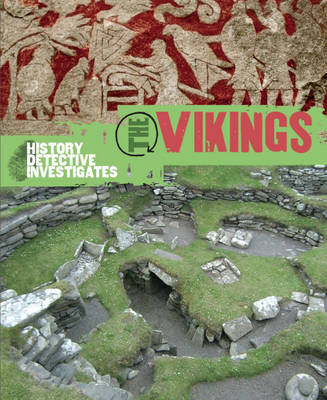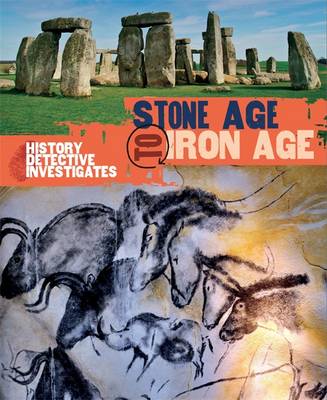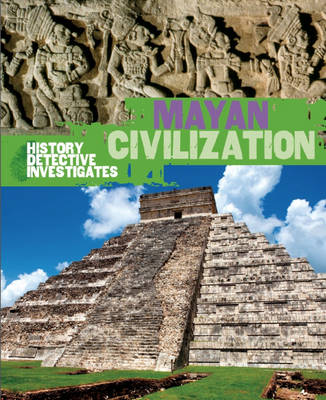History Detective Investigates
3 total works
The Vikings came from Scandinavia, Denmark, Norway and Sweden. They invaded and settled in Northern Scotland and the East of England looking for farmland. The Viking age in Europe ran from around AD 700 to 1100. Vikings arrived in longships and attacked small villages, following a sustained campaign of attack. The Vikings famously settled in York building houses and establishing trades such as jewellery and pottery making and woodworking. Women were important in Viking family life. They ran the home and farm while their husbands were away trading or fighting. Throughout the Viking age there were many battles between the Vikings and the English with King Alfred preventing them from taking over all of England. In the 10th century England won back much of the land taken defeating Eric Bloodaxe, the last Viking King of Jorvik. Viking rule ended with the invasion of Britain by the Normans in 1066. Contains maps, paintings, artefacts and photographs to show how the Vikings lived. Ideally suited for readers age 8+ or teachers who are looking for books to support the new curriculum for 2014.
If you enjoy reading about the Vikings then take a look at Stone Age to Iron Age, The Mayan Civilization, The Shang Dynasty of Ancient China and Early Islamic Civilizations.
If you enjoy reading about the Vikings then take a look at Stone Age to Iron Age, The Mayan Civilization, The Shang Dynasty of Ancient China and Early Islamic Civilizations.
History Detective Investigates: Stone Age to Iron Age is a hands-on, investigative approach to history. Learn all about early settlers in Britain and the story of the Stone, Bronze and Iron Age during the late Neolithic period over 6,000 years ago. The first Britons were hunter-gatherers who came from mainland Europe to settle in England. They bought wooden spears, flint handaxes and animals with them and were a nomadic people. Stone Age to Iron Age tells the story of how these people settled and began farming the land. They built villages of timber and stone houses such as Skara Brae on Orkney. Stonehenge is perhaps the most famous monument of this period, a technological marvel of the time built by raising over 80 blue stones to create the 'henge'. The Bronze Age bought with it metalworking using copper, tin and gold to make tools and beautiful everyday objects. The Iron Age was known for its hill forts, farming and art and culture. Contains maps, paintings, artefacts and photographs to show how early Britons lived. Ideally suited for readers age 8+ or teachers who are looking for books to support the new curriculum for 2014.
If you enjoy reading about the Stone Age to Iron Age then take a look at Ancient Greece, Ancient Sumer, The Mayan Civilization, The Shang Dynasty of Ancient China and Early Islamic Civilizations.
If you enjoy reading about the Stone Age to Iron Age then take a look at Ancient Greece, Ancient Sumer, The Mayan Civilization, The Shang Dynasty of Ancient China and Early Islamic Civilizations.
The early Mayans date back to 1800 BC however the golden age of Mayan civilization was around AD 250. They were the most dominant civilization of Mesopotamia covering what is now Guatemala, Belize and parts of Mexico. The Maya excelled at agriculture, pottery, hieroglyph writing, calendar-making and mathematics, and left behind an astonishing amount of impressive architecture and symbolic artwork. The Maya were most known for the cities they built, amassing over 40. Piazzas, palaces, temples and pyramids have been unearthed and courtyards for playing ball games. Farming communities lived outside the cities. Deeply religious, the Mayans worshipped various gods and the kings were claimed to be related to the gods. Mayan Civilization had declined in AD 900. No one is quite sure why but theories involve extensive war fare, depleted resources and a natural disaster which may have buried the cities in the lowlands. Contains maps, paintings, artefacts and photographs to show how the Mayans lived. Ideally suited for readers age 8+ or teachers who are looking for books to support the new curriculum for 2014.
If you enjoy reading about the Mayan Civilization then take a look at Ancient Greece, Ancient Sumer, Benin 900-1897 CE, The Shang Dynasty of Ancient China and Early Islamic Civilizations.
If you enjoy reading about the Mayan Civilization then take a look at Ancient Greece, Ancient Sumer, Benin 900-1897 CE, The Shang Dynasty of Ancient China and Early Islamic Civilizations.


